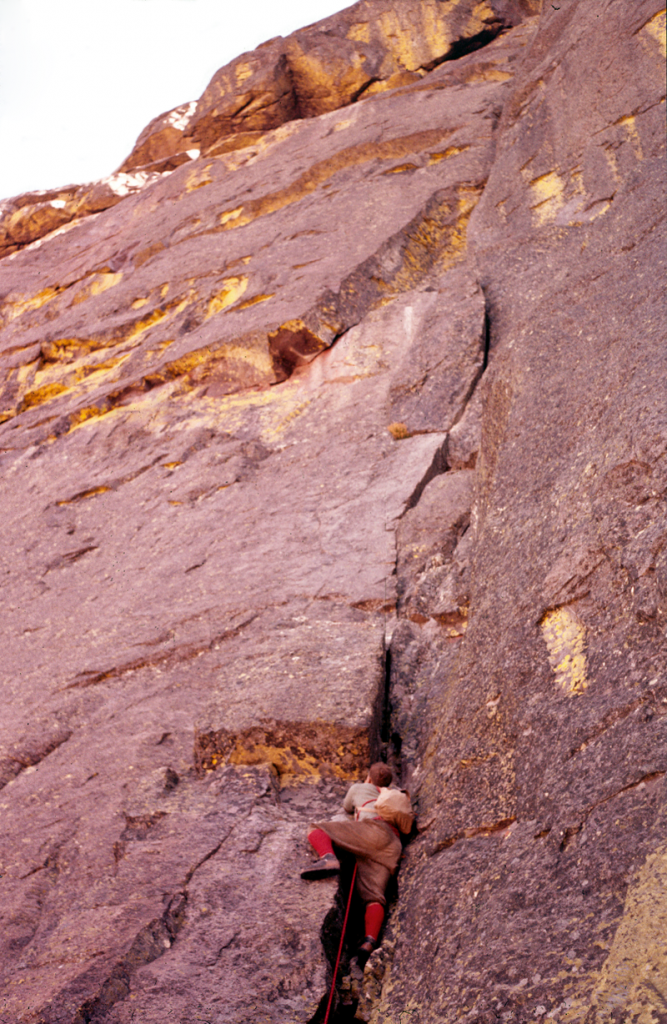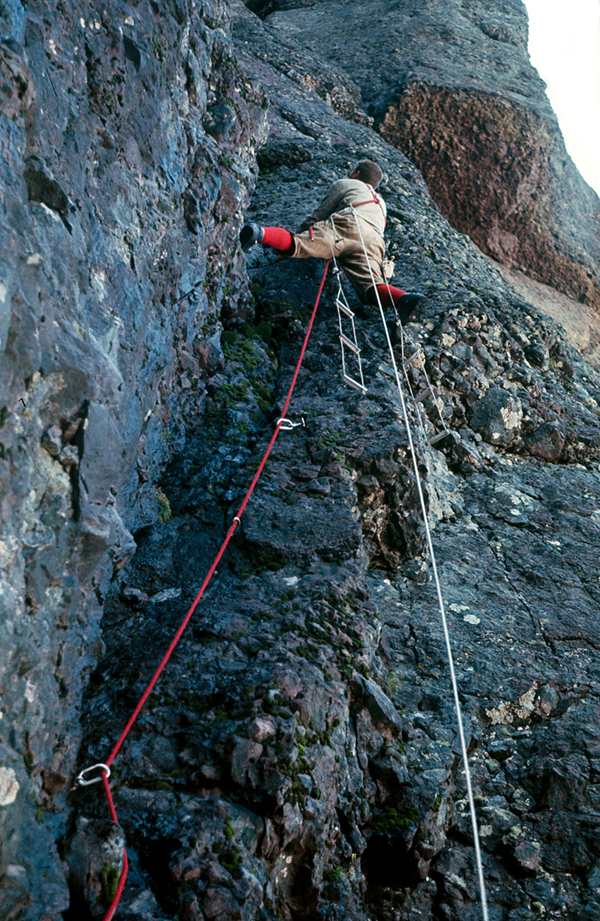This brief glimpse into corsican climbing history is taken from the guidebook Grandes voies de Corse – edition 2021
For centuries, millennia even, shepherds looking for lost goats and mountain sheep hunters climbed the island’s accessible summits. With more than enough to keep them busy in the Alps, 19th century alpinists put Corsica to the back of their minds and when the first explorers set their sights on the island, they naturally focused on the massifs to the north of the island, which are higher and more alpine; criteria that were essential at the time for a mountain region to be considered worthy of interest. These first sport climbers were British, but it was already the end of the aristocratic alpine climbing era and quickly Germans, Austrians, French and Italians started to explore the island. The first important ascent was made by the Finch brothers and Bryn, the Norwegian, in 1909, climbing the east face of the Paglia Orba during winter. Just before the Second World War, the rope parties Ghiglione-Boccalatte and Schmidbauer-Bucher dared to attempt several technical lines on remote faces.
We then had to wait for the numerous visits of Werner Krah and his friends who made first ascents from 1959 to 1965 of some high level, daring routes on the Cintu’s north face, the Paglia Orba or some of Bavella’s summits, introducing at the same time the VIth grade.
With the numerous ascents of Gilbert Carpentier and his companions (the RSCM team) and those of the first group of climbers from Marseille who made first ascents of countless routes in the huge, almost virgin Bavella massif, the centre of climbing activities moved from Asco over to Bavella*. At the same time the dynamic group of climbers from Montpellier (P.Couval, Y.Gilles, D.Bourret) chose the Capu d’Ortu as their playground and made first ascents of half a dozen long routes. These routes, crowned by a sulphurous reputation, have hardly been repeated because of a lack of reliable information. It’s also at that time, in the midst of the 1970s, that the first Corsican climbers entered onto the scene.
First of all, Jean-Paul Quilici, extremely active in “his” Bavella massif and for a long time a well-known public figure of the island’s mountains, was followed some years later by Pierrot Griscelli and particularly Pierre Pietri who besieged the northern massifs.
The islanders have entered the stage and won’t leave it. Jean-Toussaint Casanova joins this trio, an eclectic climber putting his signature on most of the island’s massifs.
At that time also, the PGHM rescuers, supporters of climbing for all, bolted countless accessible climbing routes for all in the Corte Region and the new group of climbers from Marseille continued the work of its elders at Bavella.
We are at the start of a new millenium and, after the wave of fully-bolted routes between 1990 to 2005, the trend is for mixed new routes, aided by new equipment, and making the most of the granite on which gear is easy to place.


Today, and in the last few years, Jeff Andreucci has been the most active first ascensionist in Corsica. A great fan of trad and jams of all kinds, he chases cracks on the island rock faces. But the development of Corsican climbing no longer relies on the extraordinary motivation of just a few people. Many climbers act out their passion and put up new routes here and there at all levels and in all styles. Along with those that came before them, they are the very reason for this guidebook.
Finally, we cannot forget two people who have held a special place in this whole alpine century. Their authority doesn’t only cover climbing, but all mountain activities. They’re actors, but above all chroniclers.
The first, the doctor Félix Von Cube, undertook a systematic and profound exploration of the island’s massifs. From 1899 until his death in 1964, he came almost every year to go over all the massifs and map them.
Michel Fabrikant took over and published exhaustive guidebooks that list, summit by summit, all the access routes, for hikers or climbing teams. These first guidebooks democratized an activity that is no longer only reserved for explorers.
*For a more detailed history of climbing at Bavella, refer to the guidebook: Bavella Corsica – Escalades choisies.
